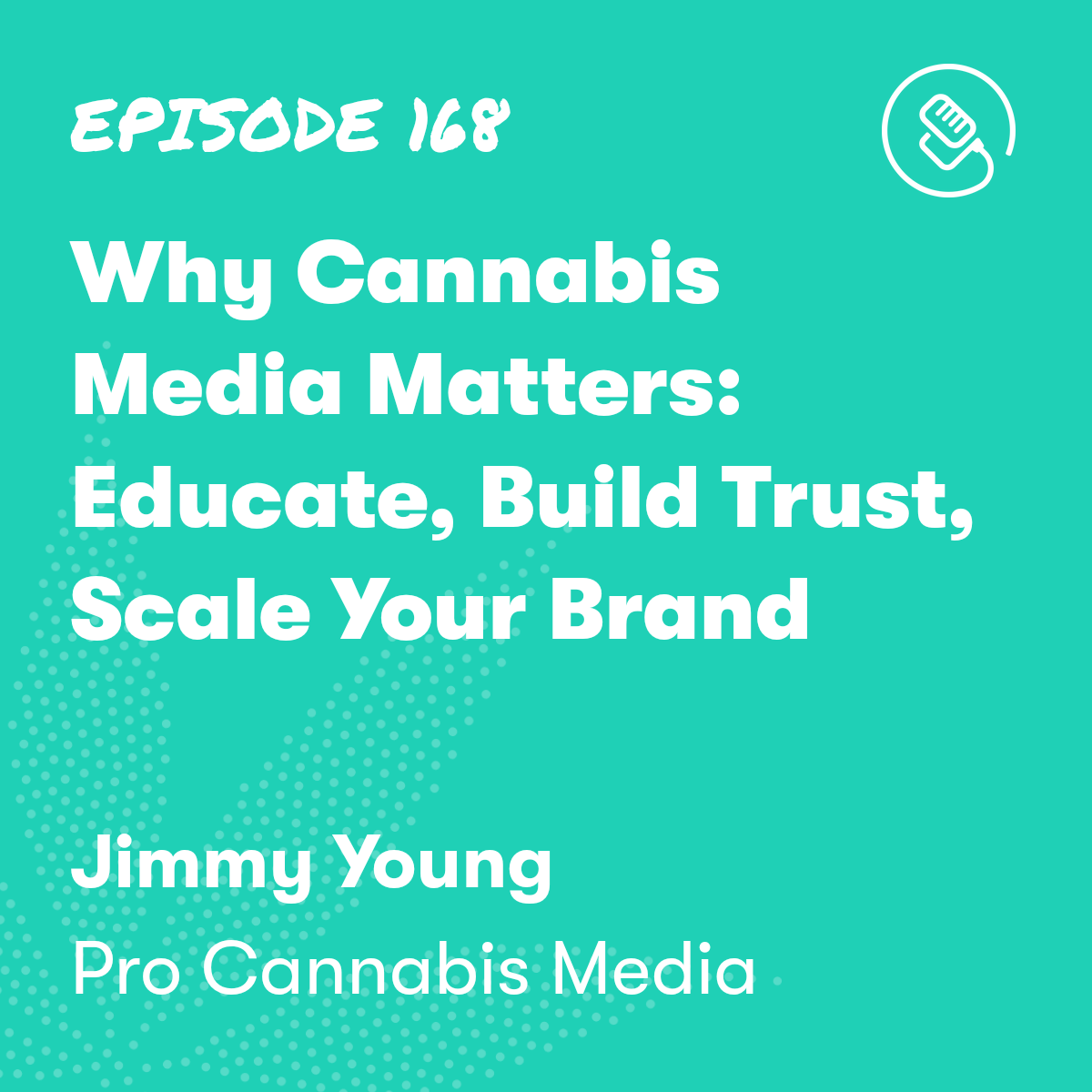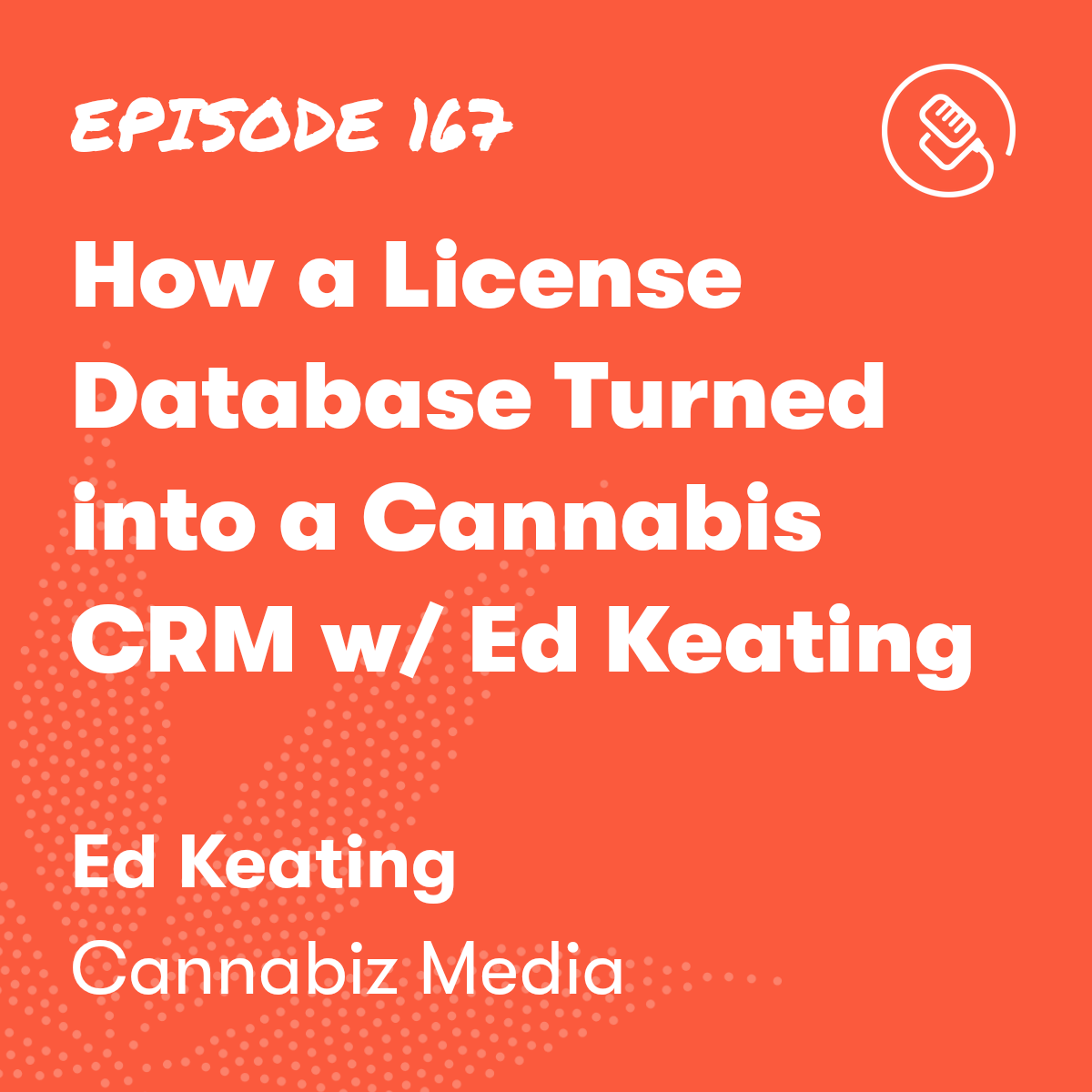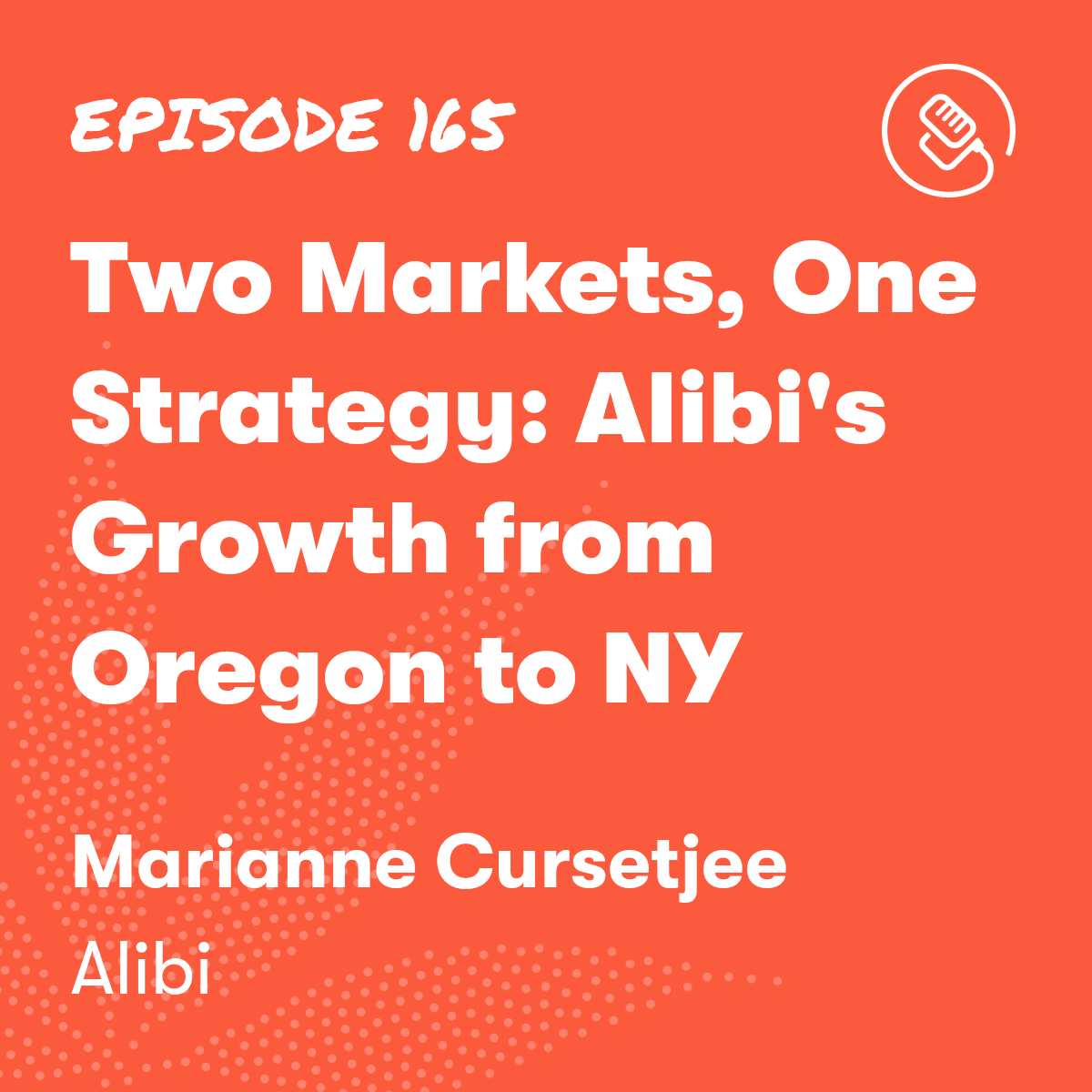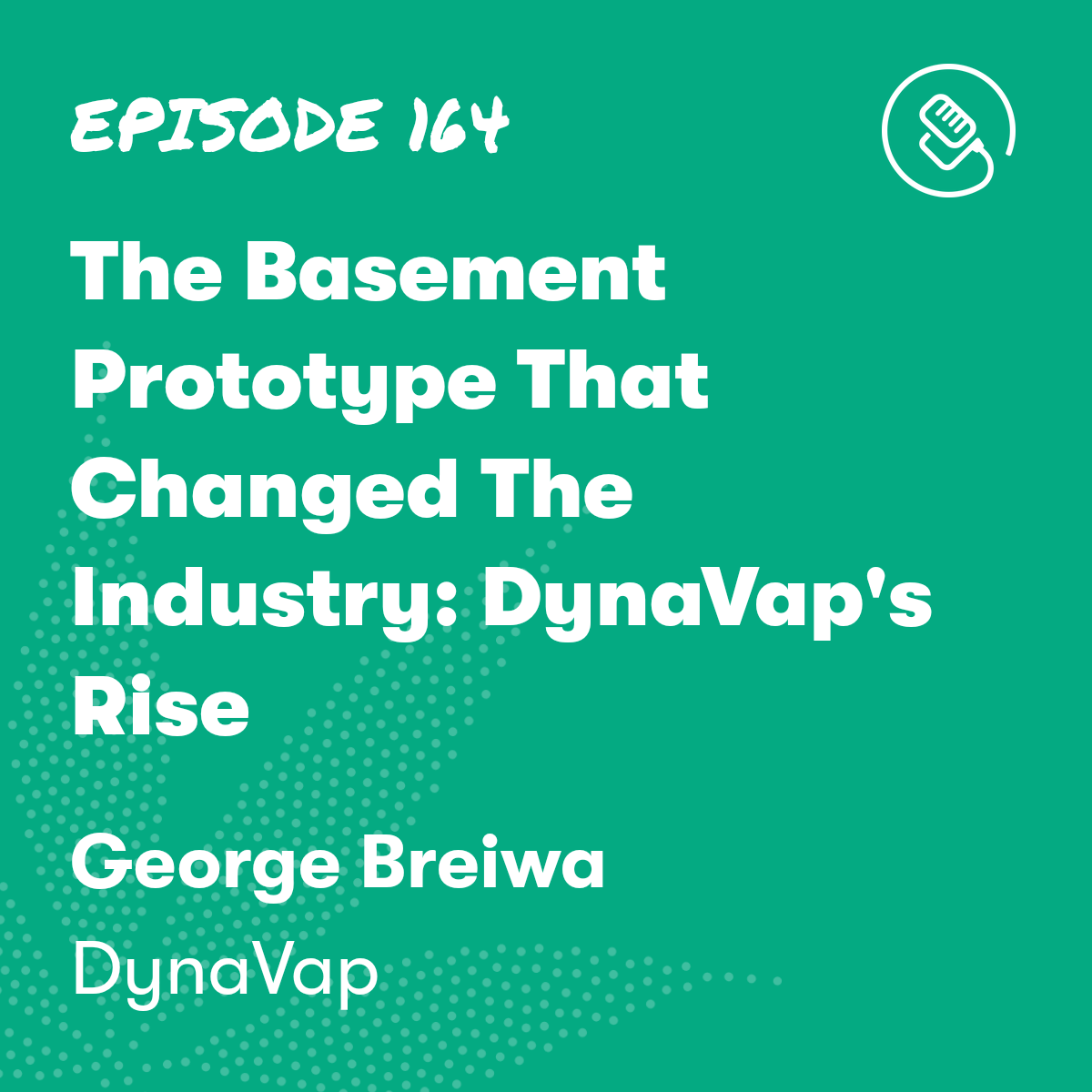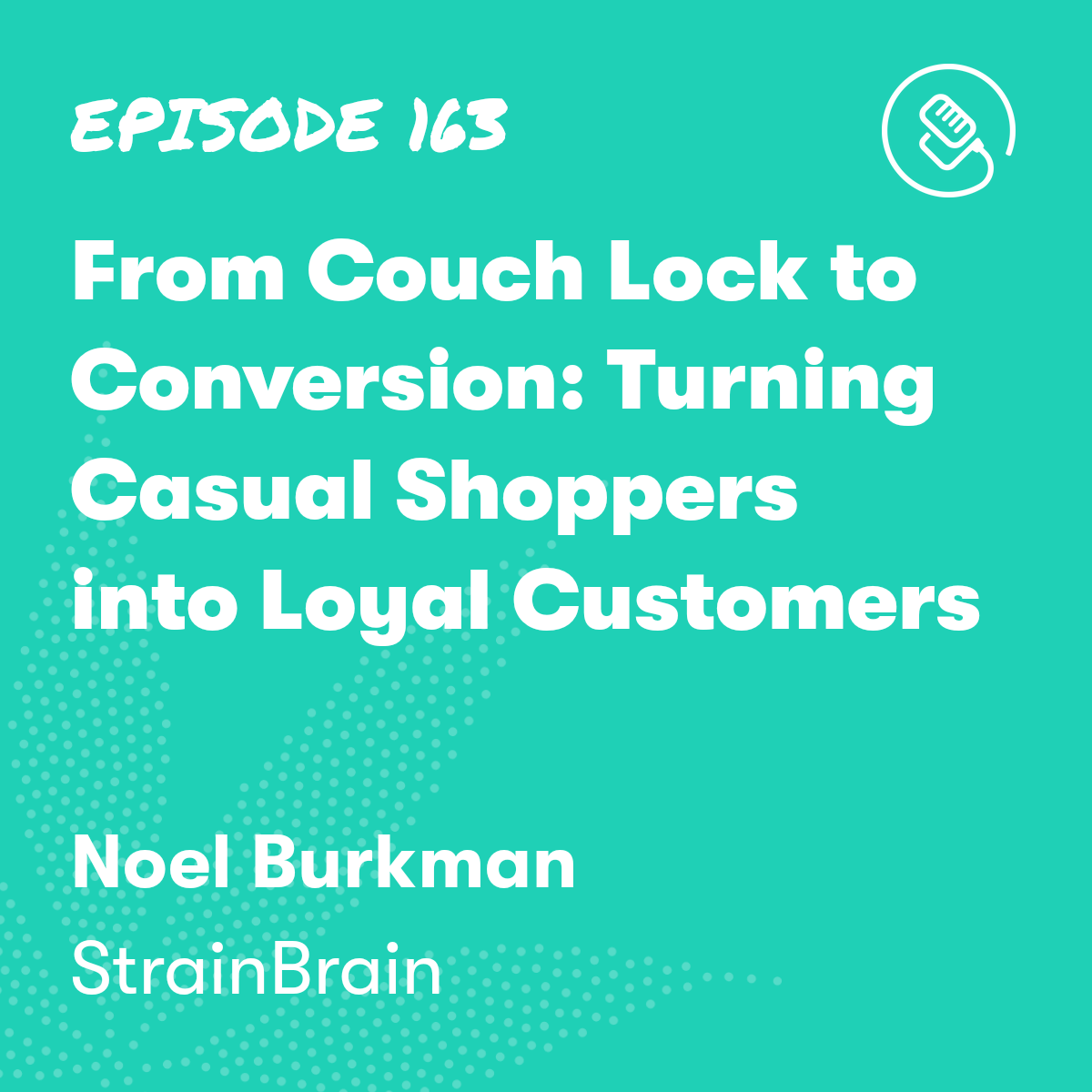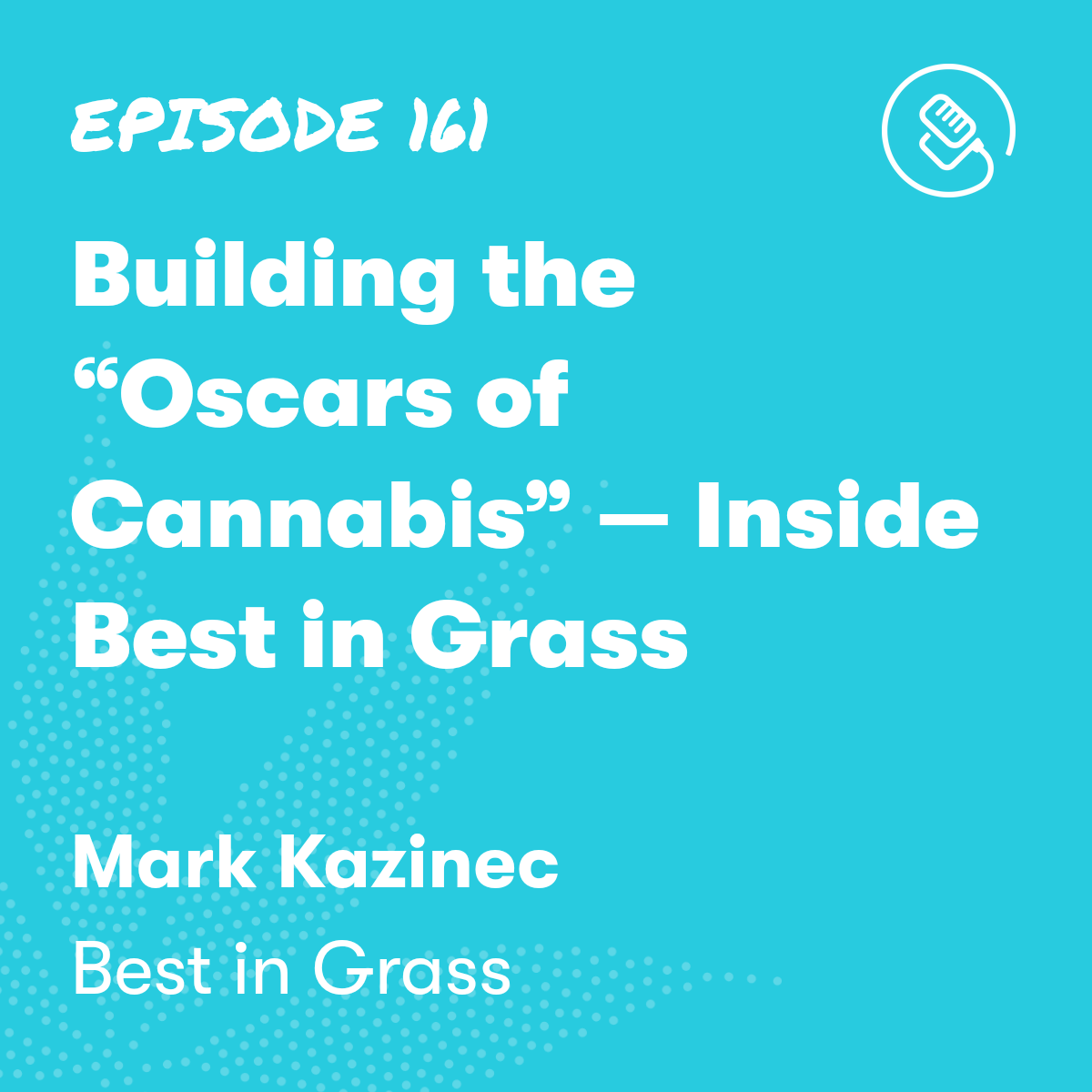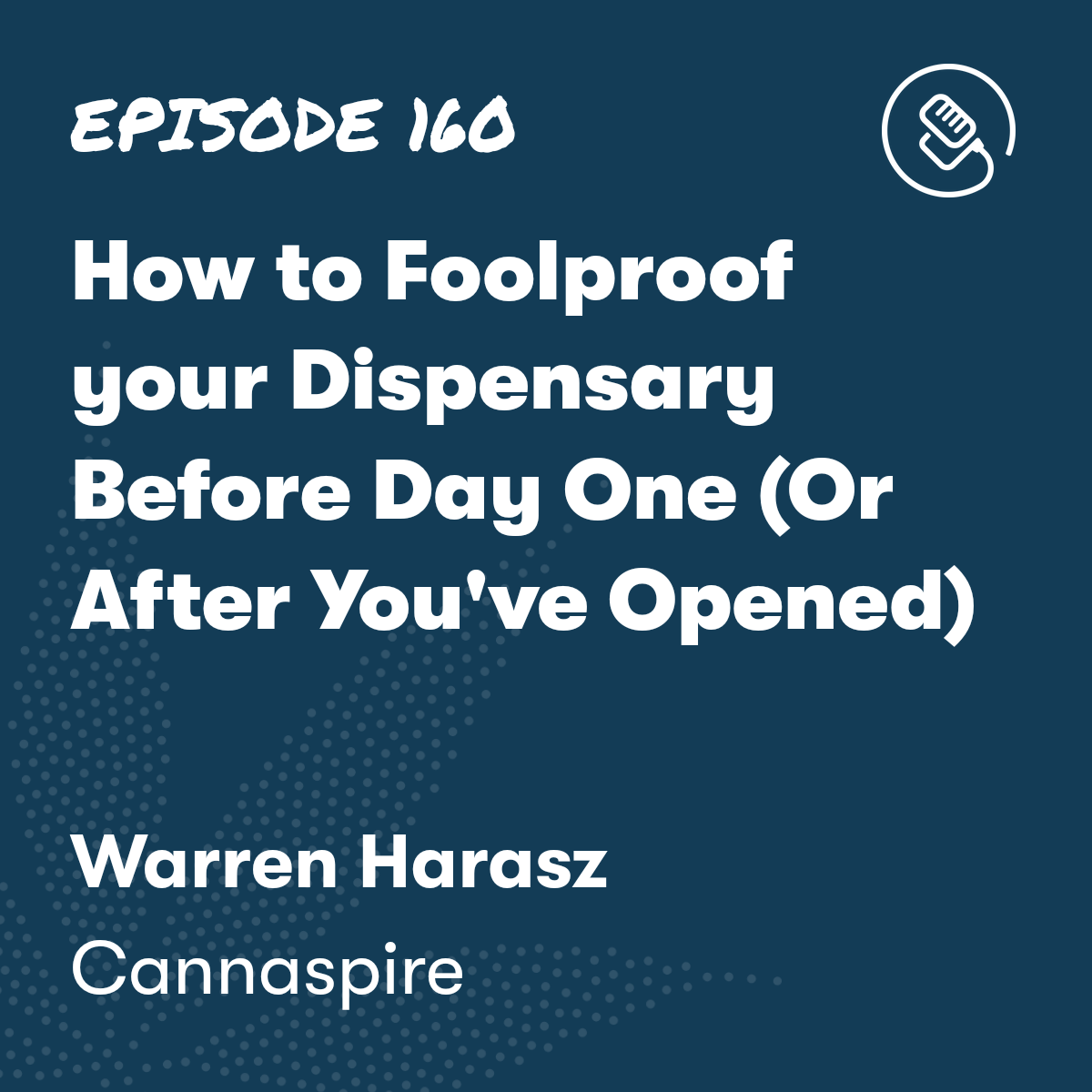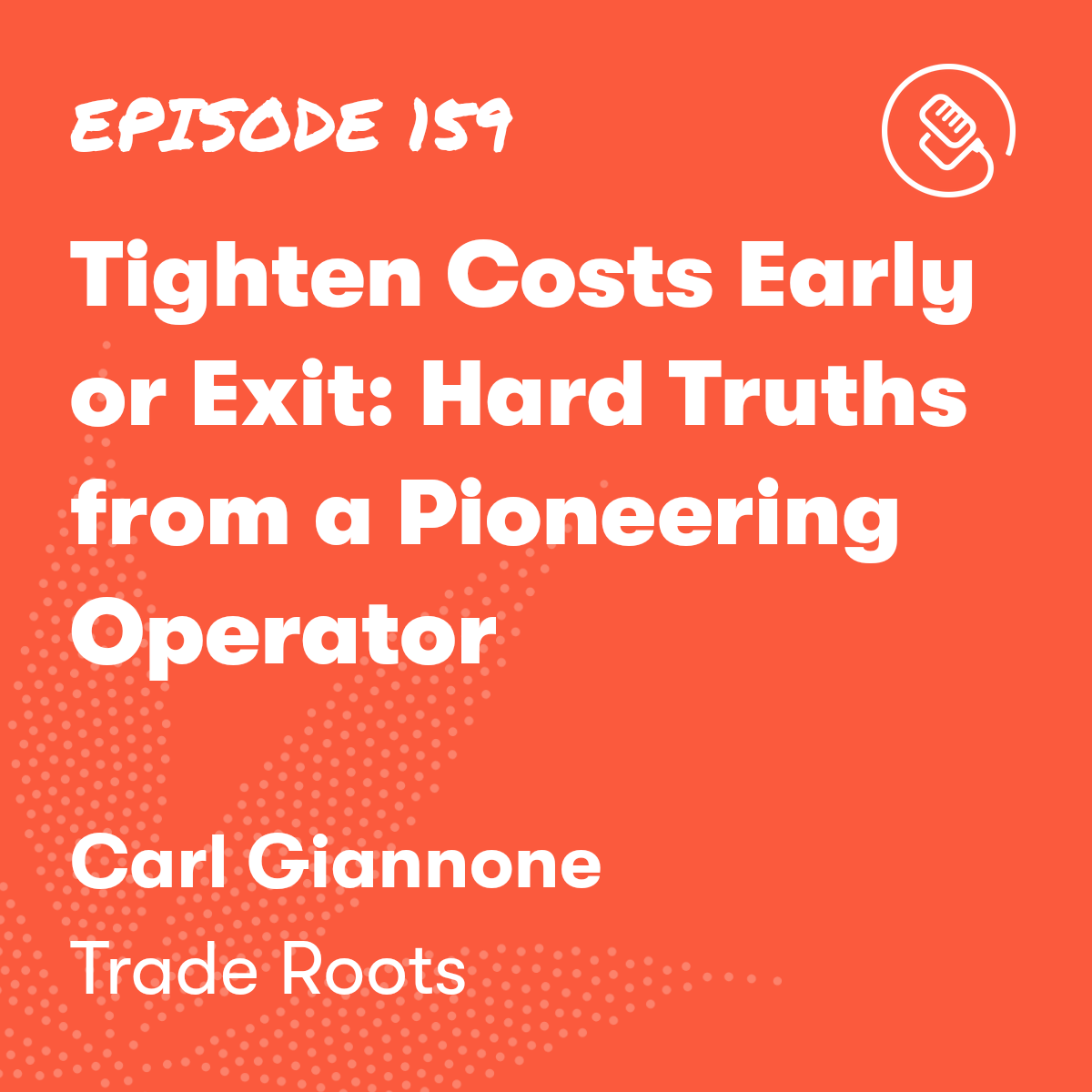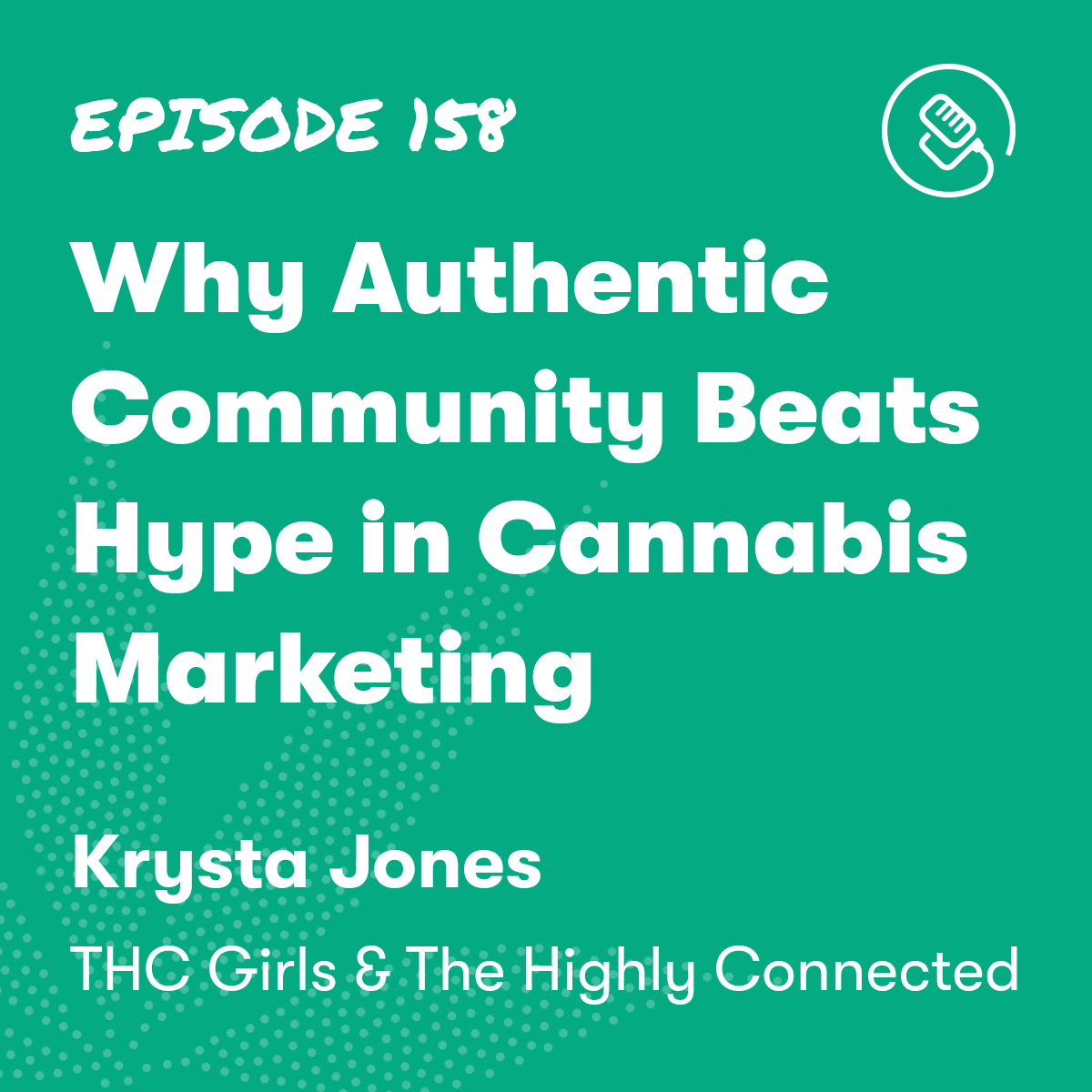

Diversify Your Dispensary: Key Strategies from Mosaic
Episode Description

Episode Transcript
Intro: Welcome to the KayaCast, the podcast for cannabis businesses looking to launch, grow, and scale their operations. Each week, we bring you interviews with industry experts and successful retailers, plus practical tips and strategies to help you succeed in the fast growing cannabis industry.
Tommy: Hey, everyone. In this episode, we are joined by Jack the co-founder and CEO of Mosaic Green and all in one solution that combines payments. Loyalty and e-commerce. Jack has over 20 years of experience as an entrepreneur. And prior to mosaic, he was the CEO of BTC, which he led from zero to 800 employees and 300 million annual revenues.
In this episode, he talks about the tenants of a great loyalty program and where to start. I learned a lot talking to Jack and I hope you guys do too. Enjoy.
Why is customer loyalty so important in the cannabis industry?
Jack Blaeser: Well in the cannabis industry, um, today it's mostly about price. Um, and it's so competitive. So you need that competitive advantage. And, uh, for me, um, and for, you know, from my perspective, it's, you know, how do you stand out? How do you build your brand? And then therefore, um, how do you engage your customers better? Um, so loyalty is about just building that brand, understanding your customers, building that brand, and connecting with your customers. And, you know, as Mosaic, what we do is we try to help provide a platform that lets you, one, understand that each customer's different and then communicate to them differently, connect with them and help educate them about, you know, why you're able to, um, service them better. And as a result, um, by doing that, um, you start to create some loyalty. And there's a bit of a special sauce there around loyalty where. You know, a loyalty platform on its own. It's difficult. It's, it's hard. But when you can kind of pull it together with the ability to look at product, to order product and pay for product and build loyalty all in one like Starbucks does, really, that's the magic. And having one customer experience platform, you know, outside of the store where everything's pulled together, um, that's where everything works and that's where loyalty will work. So, um,
Tommy: you made a really good tidbit there that I've never really thought through. Customer loyalty isn't powerful unless you tie in other parts like inventory. What do you mean by that?
Jack Blaeser: Yeah. So, um, you know, a lot of solutions today will sell you a customer loyalty platform that is really a, a marketing platform. You, you reach out to your customers, you send them messages, um. I think, and I think it's proven, it's all about the experience. I mean, yeah, you can send customers messages, but to really create that connection with the customer, you wanna have the best experience out there. And what that means is you wanna be able, in the, um, the, uh, online, digital world, be able to give them a really customized experience. So branded experience, you know, your brand, but you wanna be able to give them the ability to go in, in the way they want to, whether it's on their phone through an app or it's an online menu through their desktop, to go in and look at all your products in a very vivid manner. And then to be able to then be able to pay for those products within that same experience and while you're shopping, to be able to get the messaging, to be able to guide it through that process. So while you're shopping, you may get messages or offers that are custom personalized to you to help you. Or guide you towards, you know, what you might wanna see and what you might wanna buy. And that's where the magic is when it's all pulled together, um, as an experience, um, it makes it a lot easier for the user to want to come back and come back again. And that's true engagement. And then that desire to come back to that same platform because it's comfortable, because it gives you what you want and you're not kinda managing different platforms. Um, then you start to engage people. So there's like three components that we're able to do because of having a single platform that really is engaging. It's one driving adoption. So you wanna get people onto your platform as a dispensary instead of the marketplace where they're shopping with everybody. So better platform, you know, the right way to like through, through an app or whatever the right way to access it. Um, then drives the second thing, which is engagement. So a good experience plus a nice loyalty platform that communicates to you in that way starts to engage. You drive loyalty. When you start to drive those two things, you're able to drive the three key component, the third component, which is acceleration of velocity of spend. And that's more frequent spending. It's higher average order value and it pulls it all together.
Tommy: You, you mentioned Starbucks, which is the industry leader in loyalty for retailers. What are the things that Starbucks is doing that help you can take?
Jack Blaeser: yeah. So Starbucks does exactly that and they call it the flywheel effect. Um, and that's the magic when you're able to provide a mobile experience, and I say mobile because most people are on their phone when they're shopping. And in cannabis, I know our customers, 88.7% of 'em are on their phone when they're shopping, buying cannabis. So again, the flywheel effect for Starbucks is when you provide a mobile experience that combines ability to order. Pay and loyalty all in one, kinda like what I'm talking about. And when you do that, that's when you start to, um, you know, drive the people on your platform and you, you get, you, they start to get engaged and they wanna come back again and again. I mean, it's crazy. People pay a lot of money. They go and buy from Starbucks because they have points, um, or it's easy and convenient, but the platform that they've invested a hundred millions of dollars in, um, is a key, um, differentiator and it's a key driver of their success. Um, so that's what they're doing.
That what, that's what really has been proven to work for not just them, but you know, others like Taco Bell and Chick-fil-A are doing the same thing now. I mean, and it's not just the restaurant industry. You can go outside and big pharmaceutical CVS, um, tries to emulate the same kind of platform. And I know that they spent a hundred million plus on their platform as well.
So it's a power, you know, digital and data and leveraging that with a loyalty is a really powerful, um, capability.
Tommy: Especially if. You mentioned mobile. There are rules against sending customers text messages, emails, but there's really no regulation in sending somebody in that message.
Jack Blaeser: Absolutely, you're right. And um, it's a better experience too,
Tommy, right? I mean, it's coming to your phone because you're part of an app. It knows who you are. You're able to show content. You can't with text messaging. And the best thing about it for a lot of people is you can do it for free. I mean, with our customers, you can push notifications, send in an app message, um, as much as you want, and it doesn't cost you anymore.
Text messaging is pretty expensive and cannabis is technically not compliant, so you gotta get around those rules. Um, and email too. Email's not bad. You can send email out, um, fairly well. Um, so you have multi-channel capability there. But yeah. An app, the ability to push notifications is really powerful, um, in any industry, but actually more so in cannabis because you're limited, just like you said, um, where other industries aren't with text messaging.
Tommy: So if you were to build out a customer loyalty program for a brand new dispensary, what, where would you start?
Jack Blaeser: Um, so let's see the key components, right? You build this up first. It's, um, knowing your customers. So having a customer profile, uh, is important in that, you know. Not just their name and the birthdate, but having an understanding of what they buy and how much they spend and what they buy, right? And maybe some demographic information is really helpful, um, as a baseline.
So how do you collect that information?
Tommy: Mm
Jack Blaeser: and for dispensary, the big challenge is how do you get people to sign up to your program and start to collect that information? So the better tool that you have, that makes it easier. Um, you know, the better you're able to do that. But that's probably the foundation
of a good loyalty pro platform. And then once you have that right, look at the next step, you know, how do you then leverage that data, that information so that you can start to personalize your communications? Um, in our case, you segment users into different groups, um, that are more logical, and then you start to give them targeted offers. So now you can segment your users. So you have to have a tool that allows you to do that, group them in a logical way. And then the third component is to be able to. Provide them more relevant, um, targeted messaging or even offers and rewards as part of a loyalty program. So where today a lot of folks in dispensaries are giving everyone the same discount. costly too. Everyone gets the same discount. Obviously if you can know who somebody is and you send 'em, uh, an offer that they're more likely to be interested in, uh, and leverage, that's gonna be a lot more effective.
Uh, so that's the third component. And then the fourth component is the data. I mean, once you're starting to get your program running, do you have visibility to all that data and what people are reacting to and you know who likes the offer, you know, what offers do they like, et cetera.
And to be able to analyze that data, um, is really powerful to make that in that 360 loop of really effective right in a loyalty platform. And then I'll take one step further, which we are working on, but um, we've got some more work to do is I. To automate it with, say, machine learning, artificial intelligence. And, you know, Amazon does this today, UMC, you'll get ads based at, you know, on things you've been watching online and all that. But we're even looking to do that where we've got all the data now for your customers. Um, it's your data as a dispensary, but now we can start, help you leverage that and through machine learning or ai, be able to automate that.
So now people are getting personalized menus or they're getting offers and messaging that's really tailored to them, but done, you know, on an individual level rather than a group level.
Tommy: Mm-Hmm.
Jack Blaeser: So there's a lot to it, but there's, um, if you, if you answer your question down to the basics, understand your customers with profiles, you know, be able to, uh, group them effectively and then, um, be able to target messaging and, and, and then have data to, to, you know, learn from that and improve it on a going forward basis.
Tommy: How easy is, is it under Mosaic to capture customer demographic data? As a retailer, what do you need to do? Like how does this work?
Jack Blaeser: Yeah. So this is what's kind of cool about what we're doing. Um, you know, the, the big technology platforms out there are on a platform they call an iframe that kind of blocks the visibility to what people are doing online. So when people come into a store, you get to meet them, you collect their information, but actually you don't necessarily know what products they're looking at.
You're not capturing all this data, what they're looking at and how much time they're spending looking at products. Right. Um, a bud tender might have that conversation,
but, um, I. You know, that's not captured anyway. Uh, it's just what's captured is what you buy.
But online, the beautiful thing about that is you have the technology out there and with Mosaic, our customers can see everything. They can see the demographics of where, what city or zip code everybody online is coming from. They can see what products they're looking at. They can see how much time they spend on each product, whether it's 13 seconds on this product on average, or 22 seconds on that product. Um, they can also see the whole flow. You know, people come into the main menu and then what percentage go to this product versus that product. And then of that product, what percentage then put it into the cart and of that product putting it in the cart, what percentage of them actually buy it for everything that's happening? Right. And a lot more they can even build in ROI calculators, um, into the data that we're able to provide. So that is visibility. I. That most don't have today and can't get access to and don't even have in the store. Think about that. It's priceless to have information on where people, what products they're looking at, and how much time they're spending and whether they're buying it or not. Um, once you start to be able to capture that data and use it, um, then it becomes really powerful. And Tommy, to go back to my other point, you know, it takes time to actually took a, take a look at the data, but when you start to apply machine learning and AI to it, and it, uh, the, the, the software does it for you, now you've got something special. And that's not being done in cannabis. And that's what Mosaic is really starting to do and really opening up for, uh, dispensaries.
They can see everything now with Mosaic, and that's a really big step, first step for them.
Tommy: yeah. That's so interesting. I had no idea. So what percentage today of customers shop online versus going in in store and and is Loyalty is both. Loyalty is shopping online, but also pushing people to the store, I'm guessing.
Jack Blaeser: Yeah, so it's a great question. It varies. I've seen it vary from five or 10% on the low end, and, you know, high end being 50 to 60%, although I've, you know, some actually get to 90%, but mostly, you know, 50 or 60 is really killing it, doing a good job. And, um, and there's a lot of benefits to pushing people online.
I mean, it, it, it, one is a good experience and people want it, not everybody, but a lot of customers do. It is much more efficient in the store. 'cause when people actually shop and buy online and come to the store,
they're picking up.
So it's really quick and you need less bud tenders and overhead there. And as I mentioned, when they do an online, you get all this data and then you can understand your customers better. So that varies. And depending upon the dis, the, um, dispensary, some don't care about it. Some are all about getting people online and getting them to do payments online too, because that. Eliminates another issue, which is all the cash that's being pushed
around and issues around that. Um, so it's a big, you know, the ones that probably are more sophisticated or I should say, um, yeah, sophisticated, they are the ones trying to drive more and more people online and therefore it's so important to understand the technology that you're using. 'cause now you have choices and having an effective technology that you know, that you can get people online, that helps you push people online. 'cause it's a better experience that gives you the data and all, all the things that we do becomes really powerful as well. Um, so yeah, that answer ranges from 10 to 50, 60 up to 90%. Um, the average I think is around 30, 35% in the industry right now.
Tommy: 35%. And do you, do you know on the top of your head if online sales have a higher or the same ticket size as as in person?
Jack Blaeser: Yeah, online sales have like a 10 to 15% and the data might vary higher. Average order values,
Tommy: Oh, wow.
Jack Blaeser: Um, typically, and then if you pay, um, online digitally, like you move money with a bank transfer, it's called aach h typically, um, in, in online, and Mosaic facilitates that too. Then you see another bump up in the over, typically on the average order value. Um, so yeah, so there's benefits there too, right? People tend to spend more, um, when they're shopping online and I
dunno if that's true with Amazon. It probably is too because people go on Amazon. I don't know. But, um, yeah.
Tommy: Is Mosaic a an app?
Jack Blaeser: so Mosaic, um, provides an app, but we're a lot more than just an app and
Tommy: No, but what I mean by that is if I'm a retailer, I sign up for Mosaic, do I get my own app on, and then customers download? Is that that how it works?
Jack Blaeser: So we provide customers their own branded app. It's not a shared app, it's their brand, it's their logo. It's an app that customers download onto their phone as a result. They can track how many people are using the app versus just a browser, um, on the phone. More importantly, now they can push notifications
to those users as well and do app-like stuff. Um, so yeah, we absolutely provide that. And just so people don't get mistaken, we provide an online menu that's branded as well.
And then all that loyalty, CRM reward stuff, integrated payments, you use it as a kiosk machine. So we're really an all an, you know, all-in-one end-to-end type digital customer experience. But yeah, we provide an app for customers and their own app.
Tommy: that's a big thing for retailers to have their own app. That's so cool.
Jack Blaeser: It, it's really cool.
and typically it costs you a lot of money to develop your own app. Um, and that's and the barrier for, for dispensaries, but even folks outside cannabis. That's where our breakthrough is for $500 per month. You get everything I just talked about your own branded app and online menu and CRM loyalty and all of that. Um, so we really knocked down that barrier. And it's cool for dispensary because now you have your own app, um, that helps you kind of stand out and differentiate from your competition. The other dispensaries that don't have one 'cause most don't. And, um, it's a good user experience. So users perf not all users, but many users prefer to have the app.
And if you think about it, your users have your app when they're at home, you're always on their phone. In some cases you're in their pocket, right?
You're always with them. And that's, that's a PO and you can send messages right to their phone and in their pocket. And that's a really powerful capability.
Tommy: I, I can even see, uh, the gamification of how many people can you get to download your app?
And that in itself is, is a fun campaign to do.
Can you walk me through what data points a retailer should be collecting and how this data impacts ultimately, their engagement with particular customers?
Jack Blaeser: Yeah. So, um, let me take that through different levels. Um, we touched on some of it, but, um, I think there's a logical way to look at it if you're a retailer, and it kind of depends on how committed you are to digging into it, but, you know, at the high level, right, the macro level, you know, you want to know, um, obviously your sales, your sales in store versus um, say online. And then you wanna know, um. Um, the breakdown from there just as we went through, like how many, um, how many sales online versus in store and then of the sales online, how many are downloading an app? Potentially how many are using the browser on desktop, which is all available for them. And then of that, how many are doing payments, um, to really understand that, you know, what, what they're using and how they're using it. Um, so that you can ultimately look with that basic KPI information of how you drive more people onto your online platform and then ideally driving them into the app. 'cause the app's even better. 'cause now you can push notifications to 'em, right?
And then, you know, you drive the payments, now they're potentially spending more 'cause it's easier to spend in that way.
That's very high level, um, um, information. The next level is then start to dig in and understand what they're doing in the online world. And that goes back to where are they spending time And you know, um, I. What products are they looking at? Which products do they like? And we have in graphs, you can see graphs of, okay, this is a very popular product, but very few people buy it and like that for grid craft.
And here's a product, popular product that people buy a lot of, but here's product. Um, people don't look at, don't look at a lot, but they still buy at high rate. So all those kind of metrics are available. So you can start to understand, um, at that level what people are buying, why they're buying it. And then if you wanna dive to the next level of it, you know, really understand the demographics of those of the people and your customer.
So they're buying, you know, a lot of people are buying this product and looking at it and buying it, versus a lot, not many people are looking at this product, but buying it lot. Okay, who are buying these products and
what, you know, what's the demographics there? And diving into that next third level. So to me it's those three levels that you can start to look into if you wanna get into the data. Um, but it's endless. There's so much if once
you have the data. It becomes really, you know,
Tommy: I'm even thinking through now. Okay. These, these, this demographic of people buy this product. How does that impact employee training now, now that you have that data?
Jack Blaeser: good point. Absolutely. Right. And you know, in the store it's all about that experience
and that relationship. Again, I make the point in the story, you're not capturing all that data. That's the magic of the folks online.
Tommy: Mm-Hmm.
Jack Blaeser: if you can capture that data and understand behaviors, yeah, you can take that to training and help budtenders better understand what user behaviors are. Um, I know the data that, that we're capturing would be very valuable. And, and, and, you know, to a lot of folks in the industry, whether you're a brand, um, or a data analytics company, that data that, um, that you can really get is largely not available, um, because of a lot of the infrastructures that are out there.
So, um, it can be used in so many ways.
Tommy: What are five data points a retailer should pay attention to, and how does this impact their decision making?
Jack Blaeser: Um, good question. Um, again, high level, um, number of customers.
Um, second, I like to look at number of customers being added to your, um, loyalty platform. Go back to loyalty. So you got your total customers and how that's growing, what percentage rate, right? But then the next big one is how many people per week are, or day a day are joining your loyalty platform?
Signing up. 'cause that becomes magic. Once they join, join your loyalty. Now you can market to them email push notifications in our case, um, and you're collecting all their information, um, uh, with, with their demographics. So second is, again, how many have joined the loyalty platform? Big metric. Then you wanna kind of calculate, you know, what's their spend. How much are they spending? What's the average order value, um, that they're spending, and how do you push that potentially up higher as a dispensary, right? What can you do to drive that up? Um, as well as the frequently frequency of spend. So how many times
they spend per month and what's their average order value? Those would be the next key metrics that I would look at. Um, that, that if you get a handle on those five, I don't know if that's four or five, you've got a pretty good understanding of what's happening, um, I think in your store and something to build off of.
Tommy: You know, you've seen this play out in dispensaries without loyalty and dispensaries with fantastic loyalty programs. What, what is the jump in in revenue you've seen on average?
Jack Blaeser: Okay. Um, typical examples that we've seen that I like to throw out there. Um, someone in business for two years on one of the big platforms, but not doing loyalty moves over within three months. Um, see 350% online sales growth
Tommy: Wow.
Jack Blaeser: the next six months, seven times growth. So that's pretty, um, pretty significant, right? Um, it's a combination of not just loyalty, but you know, being able to give users an app, the user experience being better,
um, having a more branded experience, but absolutely the ability to capture people's, um, or your customer's information, email, phone number, and then send messaging out to them. Um, really powerful, right?
So,
Tommy: And I would imagine setting goals in place too. Hey, we have a loyalty program. Now the first game is let's, let's sign up 50% of our customers into our loyalty program. That in itself, you're marching towards, you're marching towards being a more professional organization.
Jack Blaeser: it's a big step. Yeah, I think a lot, don't do it today, but it's a big step when and if you have those goals, if you move, if you move the meter, meter on those. Those components, just getting people onto your loyalty program. If you just focused on that as one goal,
there's no doubt, um, that you're gonna grow your revenue, um, and your profit 'cause you're gonna gain more loyalty, loyal customers, um, as well repeat customers.
So that one, one aspect you focus on different metrics as well would have a pretty big impact on your business.
Tommy: For, for people listening today that do not have a loyalty program in place or just started one, what are, what are the five things that they should do immediately?
Jack Blaeser: Hmm. Um, for those that don't have a loyalty program, um, number one, uh, you should understand. Um, the importance of loyalty and whether you think that's really meaningful. So if you don't believe loyalty's meaningful, I would ask, um, some other dispensaries that you're friendly with, um, that have loyalty programs.
Why, why do you do that? And do you get value out of it? And you may get answers that say no. Yes. But the first thing is to convince to yourself that there's value in putting, worth, putting time in. So if you're not doing it, there's probably a reason, but understand that there's value if you get sold on the fact that there's real value in doing it. The next logical step is understanding what your options are. 'cause you have options out there, you know, and, and loyalty ranges from, um, you know, having a very simple loyalty platform. Just, you know, simple point program to maybe, um, having a multi-tiered program that you customize.
Tommy: when you're selecting a loyalty partner, what are some of the things that you should look for in, in your solution?
Jack Blaeser: If you ask me that. Um, I think, and this will be biased, the number one is user experience. And we touched on this earlier, but in order for a loyalty program to work, you want users to one, sign up and use it. So you make it easy to sign up, but then you want them to keep coming back. And
it's more than just a loyalty platform, but it's the, the entire experience that they have.
So if you look at what we do, the ability to provide them their own, your own app and online menu and loyalty and payments all in one, in a very, um, in a very easy way, mobile friendly way, um, makes it easy for them to want to use your platform and therefore be part of your loyalty put program. That's the number one thing that I think is kind of the thing that's missed out there.
That, um, when it's not so hard, if your loyalty program is separate from your shopping experience and you don't get to see your offers while you shop and things like that, uh, you know, you kinda lose the. The experience that that propels people to wanna come back and get. And that's why Starbucks and others work so well.
It's all one
platform and it's very easy for users to, to adopt and use. Um, that, that's, that's a number big one. Then you can start to dive into loyalty and what's the future functionality, right? You know, can I
have tiers or not? And then how can I segment my customers? And then can I send them messaging and how can I send the messaging?
Can I only do text or can I do text and email, or can I do push notifications? Um, and that's the next level. But, um, if you don't have that great user experience, it's um,
it's, it's kind of a, a stopping point in my mind.
Tommy: So let's say they've selected a loyalty partner and we're launching a loyalty program. What are, what are the next steps that I should really consider in making my program the best possible?
Jack Blaeser: Um, it's, uh, it's really how you, um, market. So if you've got the right tools and technology
and you got those in place, the next big thing you really gotta consider is, you know, how do I drive awareness to my customers? And it's really you now on the job of marketing to your customers to use this platform. And, you know, it starts with maybe advertising it in an effective way on your website. And then the next step is in your store. Do you, um, you know, do you market any of that? So in our case, we give customers QR codes that their customers can scan and, you know, within five seconds download the app onto their, um, their phones very easily
and giving them those tools. And then it's an element of training your bud tender to encourage people to sign up and register, because that's the key. You know, get 'em onto the app. Even if they don't go into the app, get them to register in your program. So now that they're part of your program and now you can start to market to them and that's a whole marketing effort that you wanna get in place and there's a playbook there that you wanna start to run. And that is the next big step to driving an effective loyalty program for sure.
Which it's hard to do, I know in a dispensary. 'cause you've got so much on your plate
and you're trying to do things all day, but it's an investment if you make it can pay a lot of dividends.
Tommy: that's so first step, find the right partner. Second step, get users on board. How, and then you know, what should, how, what should users? I'm gonna, I've, I've never had loyalty before. I've never communicated with my customers. Where do I, what do I start? What do I do?
Jack Blaeser: Yep. Um. We like to say start slow and start to build on it, um, as you get comfortable, but, you know, start to communicate to 'em. So start to send messaging out to them that you think is relevant and start to understand your customers and segment them under how you wanna segment them so you understand your customers and, and what they might like best, probably, um, at least initially. So you, that's when you start to segment and put them in groups, right? You may have a group that you wanna segment by, I don't know, females that are spending $50 per month on flour to use an example. And they, you might send them more messages than flour, or you might wanna introduce 'em to edibles or something different. Um, but you start to message out to them, um, in a very simple way. But as you start to do that, now you're getting data. And if you can spend the time to look at your data and understand what works and what doesn't work, then you can get smart about what you want, how you segment customers, and how you, uh, message to them and what you offer to them. Um, so that's kinda the progression you take, but there's a lot to tackle when you start to unlock the loyalty program. So don't go expect that you can do everything great the first day, and if you're not hiring someone to do it for you, it's even harder, right? So just get a program
going
Tommy: What are the key tenets of effective communication in a loyalty program?
Jack Blaeser: Yeah, number one. And I think the biggest mistake made. Um, and a loyalty platform. And this kind of certainly, um, includes
communication is keeping it simple. So a lot of folks want to send a lot out and give everybody a lot of offers and kind of blast it out there. And, um, you know what, it's, it's the simpler you make it, the easier it is for someone to digest and want to take advantage of. You just can't make it too complex. It's kinda like a sales comp plan. If you give a sales, uh, comp, uh, if you build, uh, sales compensation platform program for sales reps and you make it so complicated, they don't understand it, it doesn't drive the behavior. And in some cases with loyalty or even discounting, you send out so many discounts, what's the meaning of it? And if you can make it a little bit more simple, I think, and that includes loyalty, your messaging, and what you're gonna message, um, that can be so much more effective. In my opinion.
Tommy: When I'm starting off my loyalty program, how often should I communicate with customers?
Jack Blaeser: Um, Tommy, that's a great question. How often do you communicate with customers? Um, it kind of depends. One or two times a week. Seems like the sweet spot. Um, from the stuff I see. That's good.
Tommy: Hmm.
Jack Blaeser: A lot of folks are getting a message every day and, um, sending out messages to customers every day.
Because I'm signed up with lots of loyalty platforms so I can see how they work, and I get message every day from many of them.
Um, it turns me off. I haven't turned it off myself because I'm kind of watching what they're doing.
Um, I think some people that will love it, they'll thrive on it, right? And they want that, but a lot of people may not. And if you're not messaging to people on a weekly basis and you've got the tools, it's, it's not enough. I mean, especially if you've got meetings. So you know, the sweet spot's probably. One to two, maybe three a week. Three
seems a bit heavy. I think the data will generally support that. But I'll go back, it depends,
and it depends on who you are.
So that's where, you know, you start to understand the demographics of your people or you start to segment them into groups. Now, some groups of people, as you watch your behavior, you wanna send messages to more often than others, right? Um, and then when the systems get more sophisticated and smart through AI and stuff, they're gonna realize those trends and be able to automatically send somebody who's gonna thrive off of five messages a week and buy more because of that
and not be turned off, versus someone who's gonna prefer one message. So it really depends, and that's the challenge a dispensary owner or marketing person has is what do I do and what's the right
number? And I would say it depends, and it can depend upon the individual, but you won't be able to do that right away. So
if I were to give a suggestion, 1, 2, 3 is where I would start it. And I think generally people would say. It's a good sweet spot.
Tommy: How can I measure if my message, or my, the frequency of messages is effective?
Jack Blaeser: Um, well, with the data you start to track, you know, you send out a message on how many people buy from it, right?
And,
and with, with the data that we have, you potentially can watch you send a message out and then how many people go to look at that product if it was like you sending out an offer for certain products, and then what do they do from there?
So the data's there. It takes a lot, a bit of an effort to go and get the data and analyze it and go through it. So, um, if you have a marketing team, you can do that.
If you don't, then I understand it's a little bit harder. But that's the best's, the most festive ways to look at the data. I mean, if I sending out messages, you know, how are people reacting to it?
And, and we try to provide reports and analytics around our messaging tools. To help get visibility to that and um, and that'll help.
Tommy: Do you typically see an offer every message, or is there a different variety of messages that retailers are sending up?
Jack Blaeser: Oh, there's definitely a different variety of messages. In fact, some states, as you know, you can't do loyalty, so doesn't mean you can't use a tool. So think about it. You wanna communicate to folks, and again, if you can segment, you might have an event on Thursday
at 5:00 PM you wanna invite folks to, and that's a great thing to do, right?
It doesn't always have to be an offer. In fact, sometimes it's better if it's not an offer because you're adding value. You could even send if you wanted to, a message that's more educational, you know, you've got a group of, um. if you could define them, great. If you can't that that might not know about concentrate or, um, whatever proxy you might have or new proxy might have, you might wanna send something about that that is more educational based.
So they'll want to see the message and read through it. Um, you might, um, wanna just tell them that you're closed because there's a storm today and we're shut down. So there's a lot of messaging that you can do outside of offers. Um, the nice thing about offers is they can drive behavior. Um, and you can be very specific about the behavior you want.
Like, here's an offer for these products and I want to sell them because I'm overstocked, um, or, or whatever might be going on. Um, and rewards, we talk about offers. The nice thing about, there's two, two aspects that we have at least. There's offers where you get a discount or some offer some dollar off for buying something in general. But then there's rewards. So as you accumulate points, you can use your points to get whatever special, you know, whether it's um, something off or ability to buy, two for one, whatever. Um, you're able to, um, have those rewards as well. So there's different ways to offer, but it's not just about offers and rewards, it's about the overall communication strategy that you really wanna think through. It's about building that relationship. So, um, it doesn't have to all be, be about price.
Tommy: are you able to provide loyalty customers with exclusive product? So let's say for example, my loyalty customers that have, that are purchased five times over the last month, get this exclusive product that's only for them, top shelf stuff at
Jack Blaeser: Yes. As long as it's, uh,
Tommy: right? Like legal?
Jack Blaeser: a
Tommy: Yeah.
Jack Blaeser: regulatory perspective,
you can start to do stuff like that. You can, you know, you can have multiple tiers and some people, and some tiers get
access cer to certain products that others might not get. Right. Um, tier one, get to the gold or platinum or whatever you want.
OG status,
you're, you're gonna get a little bit of bonus there. And that's, that's something that you can do that's kind of cool. That, you know, is a motivator beyond just price.
Tommy: Mm-Hmm.
Jack Blaeser: Um. So, yeah. Yep.
Tommy: Wow. There's so much that you can do with loyalty. There's so much.
Jack Blaeser: There's so much, there's so much you can do. Um, and yeah, you don't wanna do, I think a plain old system where everyone gets the same loyalty kind of program. You wanna be able to, um, create some differentiation based upon those levels and,
and motivate people kind of gamify it,
right? And, uh, and again, start slow, get people on, build that customer base.
But as you build the customer base, you can do a lot of these exciting things, more sophisticated things with them to drive their behavior, and that's where it becomes really special.
Tommy: So tell us a little bit, tell us why Mosaic makes loyalty easy. What do you guys do?
Jack Blaeser: So Mosaic provides dispensaries, um, and groups of dispensaries, like if you own many, they're own branded. Starbucks like platform. So instead of paying a million or a hundred million dollars for you to build your platform, we um, we give dispensaries their own branded platform so they can do the same thing, the branded app, brand, online menu, the loyalty, the ro, the ability to the CRM marketing, the rewards, integrated payments, kiosk capability, all the data visibility that you want, SEO capability as well, um, all in one. So we make it really easy one to give you all the tools you need instead of having to buy from several different vendors to integrate and to manage different reporting and manage different aspects of all the pieces that, that, that you really need to be pulled together. So we make it cost effective, we make it a lot easier to pull together, and we give you a tremendous amount of horsepower or capability to run everything you need, not just for loyalty, but e-commerce. And, um, and payments and everything you might do online. Um, that's what Mosaic does and that's what we started Mosaic, was to make it easy to really help dispensaries have the type of tool, um, that others in other industries have to be successful.
Tommy: If people wanted to find more information on Mosaic, how can they find you?
Jack Blaeser: Well, they can go to our website, mosaic.green, not.com. So Mosaic, M-O-S-A-I-C, dot G-R-E-E-N. Um, and you can, um, find us there or, you know, I love, um, talking to customers. I love being involved. I do a lot of demos with customers still, as you know, Tommy, so they can email me. Jack Jck Blazer, B-L-A-E-S-E-R at Mosaic Green as well. Um, and, uh, we'd love to talk to anybody and, um. You know what we're doing, but also, uh, learn from you as well. 'cause customers kind of give us, you know, a lot of great insight to help us make things better for them.
Tommy: Awesome. Well, thank you so much, Jack, for joining us. I've learned so much about loyalty and how important it is to understand your customer and understand how to engage with your customers.
Jack Blaeser: Tommy, thank you. This was awesome. I love, uh, love the format and thanks for, uh, having me on your podcast. It's been a lot of fun. Hope to do it again.
Tommy: A good one. See ya.
Jack Blaeser: You too. Bye.
Outro: Thanks for listening to the KayaCast podcast. We hope you enjoyed the show. Don't forget to subscribe to our podcast in your favorite podcast app, or visit our website to learn more about our guests and to access the full archive of episodes from the show. Join us next time as we continue to explore the world of cannabis and help you grow, launch, and scale your business.

